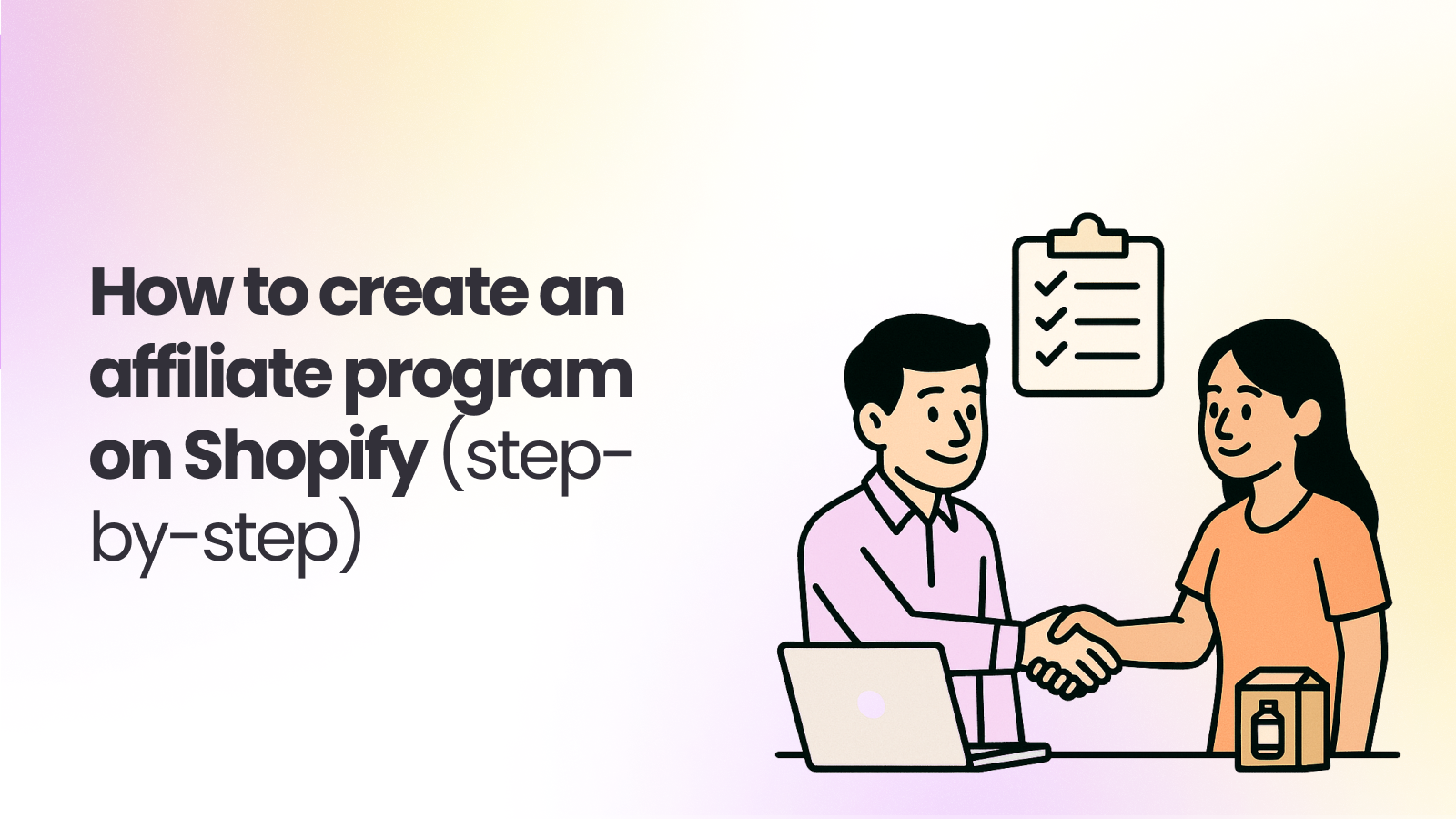
So you’re considering creating an affiliate marketing program for your Shopify store. It’s a great way to gain passive revenue, build brand awareness, and potentially go viral on social media. But how do you go about getting started? Here, we’ll break down the steps to get your new program up and running before you know it.
The data shows that the affiliate marketing industry is valued at almost $18.5 billion. And it’s no wonder why. The retail and e-commerce markets are so oversaturated that shoppers would rather turn to people and influencers they trust to make their shopping decisions. A vote of confidence from an influencer they admire is practically a guaranteed conversion.
Once you get your affiliate program up and running, it’s a pretty low lift from there. Sure, you’ll have to track performance and maintain the affiliate relationship, but it’s a minimal amount of work for the ROI. It’s also a great marketing strategy for the budget. Affiliates only get paid (usually a small commission) when they generate a sale. No upfront payouts to eat up your yearly marketing budget.

Before launching your affiliate program, it’s important to define what success looks like for your store. Is the main goal to increase brand awareness? Are you looking to boost your average order value (AOV)? Are you looking to generate more sales? By how much?
Clear goals and proper benchmarking against competitors will guide your recruitment, commission structure, and measurement of results. Set modest targets early and ensure they support your broader business strategy.

What are you going to reward your affiliates with, in exchange for promotion? Most Shopify stores go the traditional percentage-of-sale route. Typically, the commission is between 5% and 30%, depending on the store’s average price point and the affiliate’s audience and experience.
Alternatively, some stores simply provide their affiliates with gifted products, steep discounts, or just a base rate per conversion. It’s important to keep your offering competitive and enticing enough to attract high-performing affiliates, while still maintaining healthy margins.
Once you’ve established your goals and offering, it’s time to spread the word. Add a dedicated landing page and maybe a pop-up banner to your Shopify store. You should detail who it’s for, when it starts, and how to apply.
You should also promote the program through your email newsletters, blog posts, and social media. The more effort you put into advertising, the easier the next step will be.

If you sit and wait for new, talented affiliates to come to you, you’re gonna have a bad time. You need to go out and recruit. Reach out first to loyal customers, influencers, and creators who you already know align with your brand.
From there, search on social media and see which influencers are partnering with your competitors. Reach out to them via their business email to avoid coming off as spammy. Focus on building a genuine, professional relationship, rather than gaining impressive volume right off the bat.
To keep momentum up, an affiliate program needs to run on organization and inspiration. Your affiliates should be looped in to weekly or biweekly emails with new campaign ideas, content to use, and recognition of new and top performers.
You should also provide each affiliate with as much branding guidance as possible, especially as they’re just starting out. Information like elevator pitches, one-liners, brand voice, and anything else that might help them sell for you goes a long way.
Next, you’re going to need a digital platform to manage everything. Simple Affiliate integrates with your Shopify store, making it easy to run your program from day one. Merchants can enjoy intuitive dashboards, automatic payouts including tax forms, easy KPI tracking, and more.
The best part? It’s easy to get onboarded without breaking the bank. It’s one unified, intuitive platform that does the heavy lifting, so you can focus on managing relationships and growing your store.
Once your affiliates are onboarded and posting, keep an eye on the performance data. Track metrics like conversions, clicks, AOV, and which affiliates are performing the best. These insights won’t only help you reward those top performers, but you can also learn from what’s working with them and replicate those elements with other affiliates.
Regular monitoring keeps your affiliate program profitable, aligned with your goals, and a campaign that works for your company long term.
As nice as it would be, no affiliate program is “set it and forget it.” You need to check in with affiliates regularly to discuss what’s working, what isn’t, and how to keep the momentum going.
You might adjust commission rates, create new posting assets, or test out new affiliate incentives to keep them (and their audiences) excited. Ongoing optimization means your affiliate program grows in tandem with your Shopify store.
So, are you ready to get started with affiliate marketing? Give Simple Affiliate a try. We offer the most seamless affiliate marketing tool in the Shopify ecosystem, and we’re suited for stores of all sizes.
Book a demo today, and get your affiliate program up and running in no time.